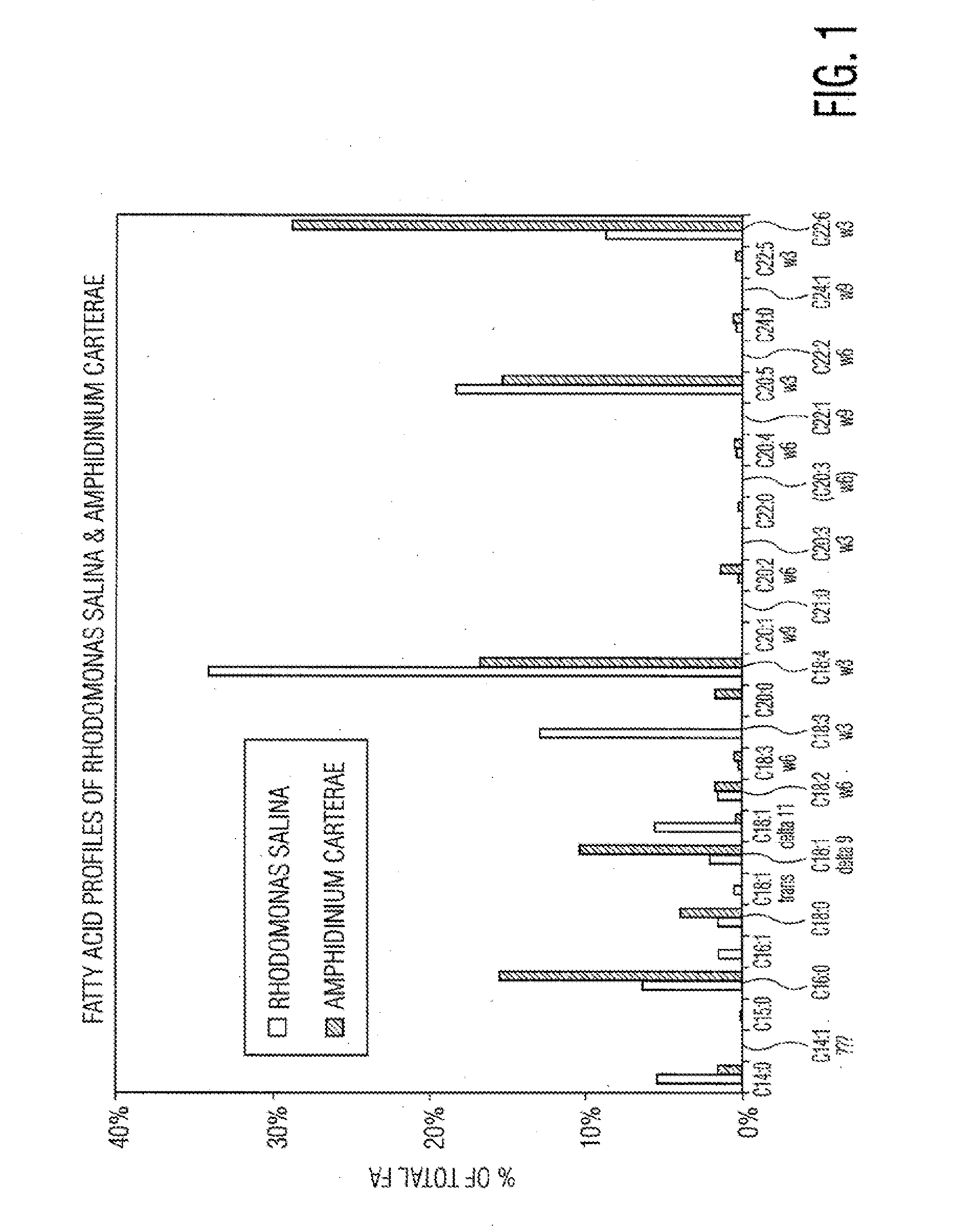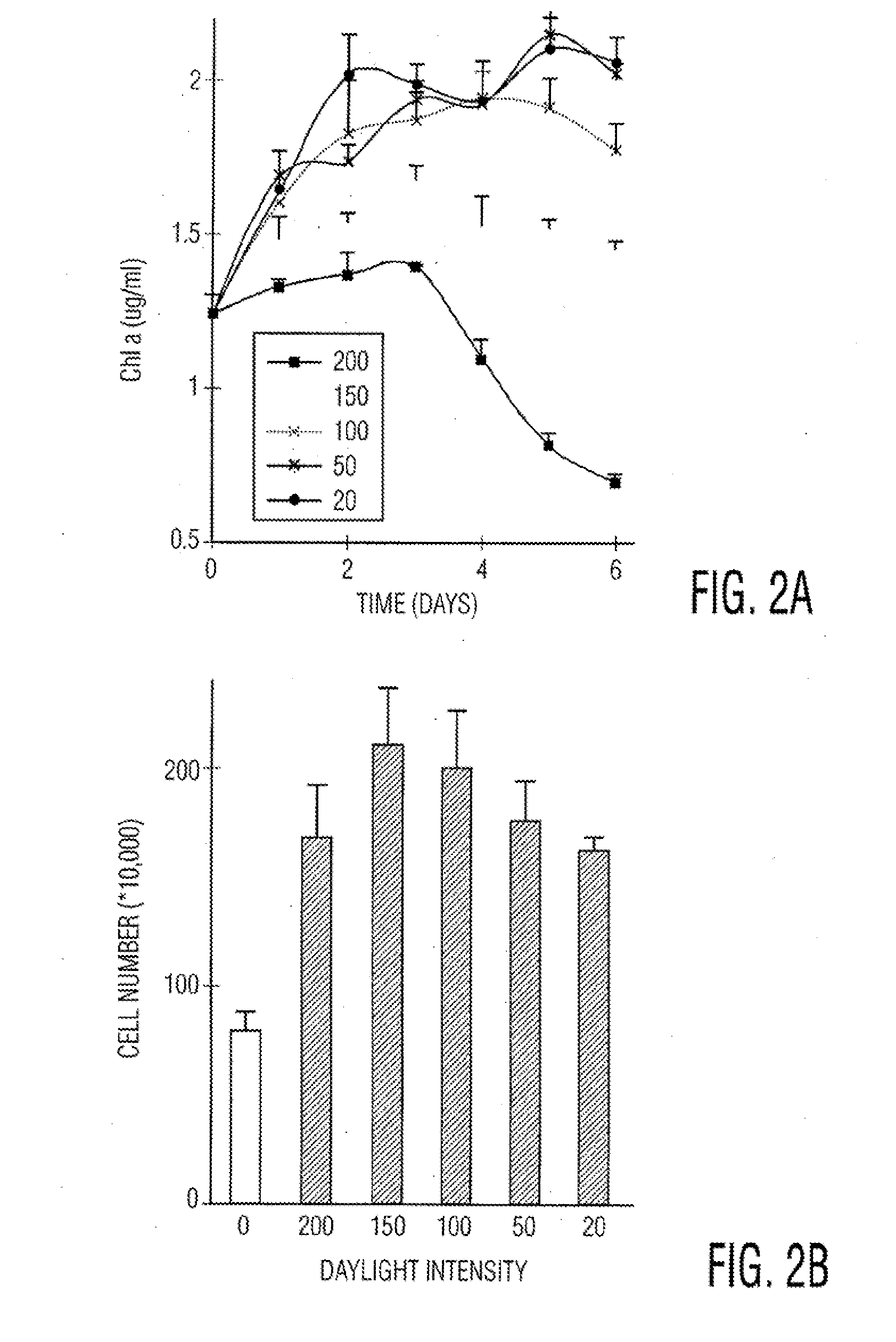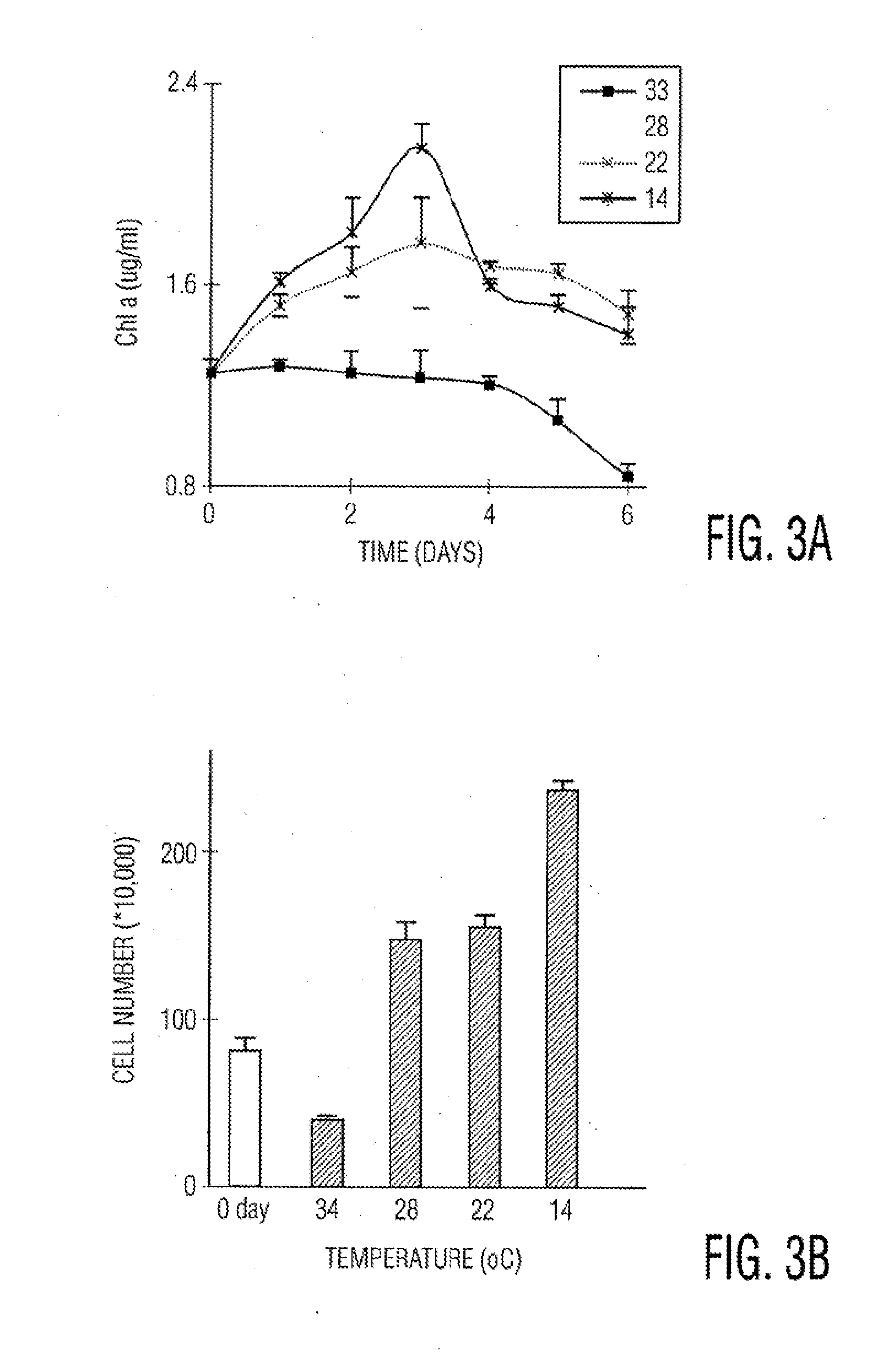Compositions, methods, and kits for polyunsaturated fatty acids from microalgae
a technology of polyunsaturated fatty acids and microalgae, which is applied in the direction of meat/fish preservation using acids, plant/algae/fungi/lichens ingredients, carboxylic compound separation/purification, etc., can solve the problems of low consumption of n-3 pufas in the north american population, less favorable to inflammation, and the development and growth of cancer cells of epa-derived prostaglandins, etc., to achieve the effect of increasing dietary intak
- Summary
- Abstract
- Description
- Claims
- Application Information
AI Technical Summary
Benefits of technology
Problems solved by technology
Method used
Image
Examples
example 1
Culture Conditions
[0286]Rhodomonas salina cells were maintained in 125-ml flasks containing 50 ml of growth media (see below) at room temperature with continuous irradiance of 50 μmol m−2 s−1. Culture flasks were under constant shaking at 100 rpm, using a shaking table.
[0287]For all experiments, illumination was provided with white fluorescent bulbs (40 watt), various light intensities were achieved by changing the numbers of light bulbs or by adjusting the distance between the culture flasks and the light bulbs. For temperature experiments, culture flasks were incubated in a water bath at temperatures between 14° C. to 34° C. The temperature in the water bath was controlled by an electrical heating rod (Aquatic Ecosystem, Apopka, Fla.) at 22° C., 28° C., or 34° C., respectively. Compressed air enriched with 1-2% CO2 was used to mix the cultures, as well as to facilitate gas (O2 and CO2) exchange and liquid mass transfer.
The growth medium used was the following f / 2 Medium compositio...
example 2
Growth Measurement
[0289]The specific growth rate was measured by cell count, optical density of 550 nm (O.D. 550), chlorophyll concentration, or dry weight.
[0290]Cell counts: A one ml of culture suspension was withdrawn daily. Microalgae cells were fixed with Lugol's solution and counted with a haemocytometer. Cell concentration is expressed as total number of cells per milliliter of culture volume.
[0291]Dry weight analysis: A one to ten ml culture sample was filtered through a pre-dried, weighed Whatman GF / C filter paper. Cells on the filter paper were washed three times with 3.4% ammonia bicarbonate to remove the salt. The filter paper containing algal cells was dried overnight in an oven at 100° C. The ammonia bicarbonate evaporated during this process. The difference between the final weight and the weight before filtration was the dry weight of the sample (Lu et al., J. Phycol. 30: 829-833 (1994)).
[0292]O.D. 550: A one ml culture suspension was withdrawn daily to monitor the op...
example 3
Fatty Acids Extraction and Measurement
[0295]Cells were harvested by filtration on Whatman GF / C filter paper. Total lipids were extracted according to the method of Bligh and Dyer (Bligh, E. and W. Dyer, Can. J. Biochem. Physiol. 37: 911-917 (1959).
[0296]Fatty acids methyl ester analysis was performed using an Agilent 6890 GC equipped with a split / splittless injector at 230° C., a flame ionization detector at 260° C., an autosampler (Agilent Technologies, Waldbronn, Germany) and a CP SIL 88 column (100 m, 0.25 mm, 0.2.25 m film thickness, Varian, Datuistadt, Germany). Hydrogen was used as carrier gas at constant flow rate of 1 ml / min. The temperature of the GC oven was set to 70° C. for 3 min, increased at 8° C. / min to 180° C., held for 2 min, increased at 4° C. / min to 210° C., held for 4 min, increased at 2° C. / min to a final temperature of 240° C. and held for 25 min. HP Chemstation software (Rev. A.08.03) was used for data analysis. The sample was injected using a split ratio of 1...
PUM
| Property | Measurement | Unit |
|---|---|---|
| weight percent | aaaaa | aaaaa |
| weight percent | aaaaa | aaaaa |
| weight percent | aaaaa | aaaaa |
Abstract
Description
Claims
Application Information
 Login to View More
Login to View More - R&D
- Intellectual Property
- Life Sciences
- Materials
- Tech Scout
- Unparalleled Data Quality
- Higher Quality Content
- 60% Fewer Hallucinations
Browse by: Latest US Patents, China's latest patents, Technical Efficacy Thesaurus, Application Domain, Technology Topic, Popular Technical Reports.
© 2025 PatSnap. All rights reserved.Legal|Privacy policy|Modern Slavery Act Transparency Statement|Sitemap|About US| Contact US: help@patsnap.com



